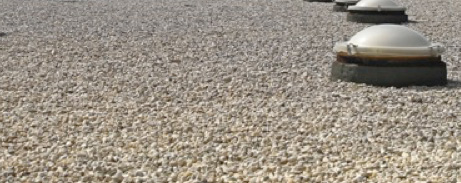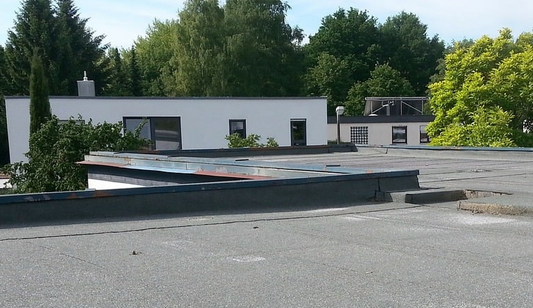To maximize your PVC flat roof's 30-year potential lifespan, you'll need to implement regular maintenance checks and timely repairs.
Schedule professional inspections twice yearly to assess the membrane, seams, and flashings for damage. Keep drainage systems clear, remove debris promptly, and trim overhanging branches to prevent water pooling and membrane punctures. After severe weather events, conduct additional inspections to catch any new issues. Apply UV-protective coatings and address minor problems immediately to avoid costly repairs. Proper maintenance tracking and professional assessments will help you reveal your roof's full longevity potential.
Key Points
- Schedule professional inspections twice yearly to detect membrane shrinkage, cracking, and other damage before problems escalate.
- Clear debris regularly and maintain drainage systems to prevent water pooling that can damage the PVC membrane.
- Apply UV-protective coatings and promptly address any signs of sun damage to extend the roof's lifespan.
- Trim overhanging branches and remove potential hazards that could puncture or damage the roofing membrane.
- Keep detailed maintenance records and respond immediately to repair needs, preventing minor issues from becoming major problems.

Understanding PVC Roof Longevity
If you're contemplating a PVC flat roof, you'll want to understand its potential lifespan and what impacts its durability. With proper care and installation, your PVC roofing membrane can last between 20 to 30 years, making it a dependable long-term investment for your property.
Most manufacturers back their PVC flat roof systems with warranties ranging from 15 to 20 years, reflecting their confidence in the material's durability. However, you'll need to maintain your roof consistently to achieve its full lifespan potential. Regular inspections are vital to identify early warning signs of wear, such as membrane shrinkage, cracking, discoloration, or separation at corners.
Environmental conditions play a significant role in how long your PVC roof will last. You'll need to address issues like water pooling promptly, as standing water can compromise the roofing membrane's integrity.
To maximize your roof's longevity, schedule routine maintenance checks that focus on seam integrity and overall membrane condition. By staying proactive with inspections and addressing problems early, you'll help secure your PVC flat roof reaches its expected service life while preserving its protective capabilities.
Essential Maintenance Schedule
To maintain your PVC flat roof's impressive lifespan, you'll need to follow a structured maintenance schedule throughout the year. Regular inspections should occur at least twice annually, allowing you to spot potential issues before they become significant problems. During these checks, focus on examining the PVC membrane for any signs of wear or damage.
Make debris removal a priority in your maintenance routine. You'll want to clear leaves, branches, and other materials from the roof surface to prevent water buildup that could compromise your roofing system.
Pay special attention to your drainage systems, ensuring they're free from blockages that might lead to ponding water, which can severely damage your roof over time.
Don't forget to trim any overhanging branches near your roof, as they can scrape and damage the PVC membrane during strong winds.
While you can handle many maintenance tasks yourself, it's important to schedule annual inspections with a roofing professional. These experts can thoroughly assess your roof's condition, identify potential problems you might miss, and recommend specific maintenance actions to extend your roof's life.
Weather Impact and Protection
Weather poses substantial challenges for your PVC flat roof throughout the year. The constant exposure to environmental factors like UV radiation, temperature changes, and precipitation can greatly impact your roof's durability. To protect your investment and extend its lifespan, you'll need to implement thorough weather protection strategies.
- Install UV protection coatings to shield your PVC roofing membranes from sun damage and deterioration
- Maintain proper drainage systems and gutters to prevent water pooling and potential structural damage
- Schedule timely inspections after severe weather events to identify and address weather-related damage
- Apply weather-resistant materials and protective coatings to strengthen your roof's defense against harsh elements
You'll need to stay proactive in monitoring weather impact on your PVC flat roof. Regular maintenance checks become especially essential during extreme weather conditions. Keep your drainage systems clear of debris and ensure your gutters function properly to prevent water accumulation.
Don't overlook the importance of professional inspections, particularly after hailstorms or heavy snowfall. By implementing these protective measures and maintaining consistent oversight, you'll greatly enhance your roof's resistance to environmental factors and extend its service life.
Professional Inspection Requirements
Regular inspections from professionals stand at the forefront of maintaining your PVC flat roof's integrity. You'll need to schedule professional inspections at least twice a year to detect issues early and protect your investment. These assessments by certified roofing experts are pivotal in evaluating the condition of your PVC membrane, seams, and flashings with precision.
During these inspections, professionals will thoroughly examine your PVC flat roof for signs of damage or deterioration. They'll check for common problems like ponding water, which can compromise your roof's structural integrity, and look for punctures or tears that might lead to leaks.
The experts will also assess UV degradation, which can weaken the roofing material over time.
Common Issues and Solutions
Professional examinations can uncover various recurring issues that PVC flat roof owners encounter. You'll need to watch for membrane shrinkage, cracking, and punctures that can compromise your roof's integrity. Regular drainage system checks help prevent ponding water, which can lead to structural damage if left unaddressed. UV degradation and seam problems are also common issues that require prompt attention to maintain your roof's performance.
To protect your investment and extend your roof's lifespan, you should focus on these vital maintenance tasks:
- Schedule regular professional examinations to catch potential problems early
- Perform monthly debris clearance to prevent drainage blockages
- Address any signs of membrane damage or seam problems immediately
- Monitor for ponding water and guarantee proper drainage after rainfall
Remember that proper installation techniques play an important role in preventing many common issues. If you notice any membrane shrinkage or persistent cracking, consult a roofing professional right away. By staying proactive with maintenance and addressing problems quickly, you'll help secure your PVC flat roof continues to perform effectively for years to come.
Preventative Care Best Practices
The most effective way to protect your PVC flat roof involves implementing a thorough preventative care routine. Regular inspections and professional maintenance are essential to extend lifespan and prevent costly repairs. By focusing on preventative care, you'll guarantee your PVC roofing systems remain durable and efficient for years to come.
| Maintenance Task | Frequency |
|---|---|
| Debris removal | Monthly |
| Drainage inspection | Quarterly |
| Tree branch trimming | Bi-annually |
| Professional inspection | Annually |
To prevent water pooling and maintain your roof's integrity, you'll need to keep drainage systems clear and functioning properly. Make it a habit to remove leaves, branches, and other debris that can block water flow and cause water ingress. Don't forget to monitor for signs of membrane damage, especially after severe weather events.
You should also schedule professional maintenance at least once a year. A qualified contractor will thoroughly inspect your PVC flat roof, identify potential issues before they become serious problems, and recommend necessary repairs. This proactive approach helps preserve your roof's structural integrity and prevents unexpected failures that could lead to costly repairs.
Cost-Effective Maintenance Strategies
Implementing smart maintenance strategies for your PVC flat roof doesn't have to deplete your budget. By focusing on preventative maintenance and addressing issues early, you'll save money while extending your roof's lifespan. Regular inspections and routine care can help you avoid costly repairs down the line.
- Clear debris monthly and maintain proper drainage to prevent water pooling
- Schedule annual inspections with roofing professionals to assess membrane condition
- Address small repairs immediately before they develop into major problems
- Trim overhanging branches that could harm your PVC membrane
You can protect your investment by maintaining a consistent maintenance schedule. Start by checking your roof's condition after severe weather events and removing any accumulated debris that could compromise drainage.
When you notice minor issues, don't delay - addressing small repairs promptly will cost far less than dealing with extensive membrane damage later.
Keep detailed records of your maintenance activities and annual inspections to track your roof's condition over time. Working with qualified roofing professionals for regular assessments ensures that potential problems are identified early, ultimately contributing to improved roof longevity and reduced long-term maintenance costs.
Rounding Up
By following these maintenance guidelines, you'll extend your PVC flat roof's lifespan well beyond its standard 20-25 years. Regular maintenance should help your roof last 30+ years . Remember, it's not just about fixing problems - it's about preventing them through consistent care, professional inspections, and timely repairs to protect your investment.




